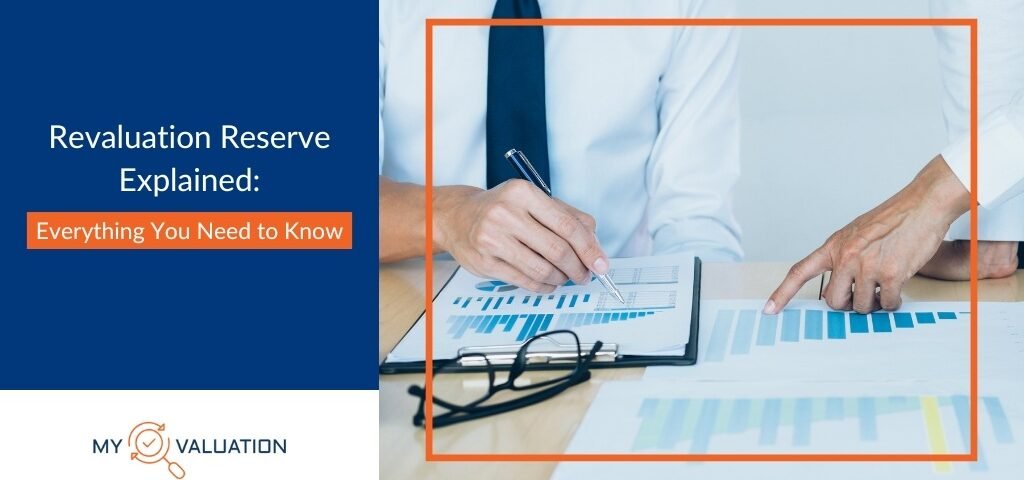Introduction
Understanding accounting can be challenging, particularly with terms like Revaluation Reserve. It can significantly affect a company's financial statements, but there is confusion around this term.
Simply put, a revaluation reserve allows your business to update the value of its assets to match its current market value. This process helps ensure that financial reports accurately represent your business's economic situation.
Businesses in India, need to ensure that their reserves follow certain accounting rules, such as the Indian Accounting Standards and the International Financial Reporting Standards (IFRS) to keep things clear and consistent while working worldwide.
From Revaluation Reserves’ basics to its regulations, let’s know everything about it via this blog.
What is a Revaluation Reserve?
A Revaluation Reserve is an accounting method that helps update a business’s asset values to reflect its current market prices. If the market value of an asset, such as property or technology, changes from its original value, this difference is recorded in the reserve.
A revaluation reserve does not involve cash and helps adjust financial statements to show the real value of the assets, giving stakeholders a better understanding of the business’s financial health.
Meaning of Revaluation Reserve
A Revaluation Reserve is a part of a company's balance sheet that changes with the value of its assets. When the market value of an asset goes up or down, this reserve helps the financial statements show the correct value.
For instance, if a building's value rises, the reserve will be updated to reflect this new value.
Understanding Revaluation Reserve
The Revaluation Reserve is important for updating business asset value. When a company reviews its assets, either by hiring an expert or comparing them with the market, the reserve changes.
If an asset's market value is greater than its book value, the extra amount goes into the reserve. If the value decreases, that amount is taken out of the reserve. However, as we discussed earlier, this reserve does not involve real cash transactions.
It is just an accounting entry that changes the asset's value on the balance sheet. Depending on whether it is positive or negative, the reserve can show up on either side of the balance sheet. It does not adjust actual losses or expenses, because that would go against standard accounting rules.
When an asset is sold, any losses are first deducted from the Revaluation Reserve. If there is any remaining surplus, it is transferred to the General Reserve, which can be distributed to shareholders.
However, losses or depreciation cannot be taken from this reserve. Any extra depreciation due to an increase in the asset's value is also taken from the reserve. It makes sure that a company's financial records show the real value of its assets, giving a clearer view of its finances.
Purpose of Revaluation Reserve
The purpose of the revaluation reserve is to show a clearer value of a company's assets. It is created to account for changes in asset value caused by such changes and to make sure the financial statements are accurate and current.
What is the formula of Revaluation Reserve?
To calculate the Revaluation Reserve, you use the following formula:
Revaluation Reserve = Market Value of the Asset – Book Value of the Asset
When the market value of an asset exceeds its book value, a positive Revaluation Reserve is formed. If the market value is lower than the book value, it suggests the asset may be overvalued, leading to a negative Revaluation Reserve and a drop in the asset’s value.
How to record the Revaluation Reserve
When an asset is re-evaluated, the revaluation reserve is recorded as a specific adjustment line. This adjustment can either increase a liability or decrease the asset's value.
If the asset’s value decreases, the reserve is credited on the balance sheet, reducing the asset’s carrying value. The corresponding expense is debited to account for this reduction.
If the asset’s value increases, the reserve expense is decreased through credit, and the reserve on the balance sheet is increased through a debit.
Revaluation Reserves are shown under Reserves and Surplus on the balance sheet. Handling revaluation reserves in accounts can differ based on national laws and accounting practices.
The Legal Framework Around Revaluation Reserve in India
In India, the Revaluation Reserve is governed by the Companies Act of 2013. Accounting standards are set by the Institute of Chartered Accountants of India (ICAI) and companies must prepare their financial statements following ICAI’s guidelines.
The Companies Act states that the revaluation reserve is a separate part of equity and cannot be distributed to shareholders. However, Indian GAAP considers it part of general reserves, which can be distributed.
SEBI regulates Revaluation Reserves and requires companies to ensure sufficient distributable reserves before any transfer to shareholders.
The Income Tax Act of 1961 also mentions the revaluation reserve where gains from revaluation are considered as capital receipts and are not taxed until they are realized. However, if the surplus is paid out as a dividend, it will be subject to a dividend distribution tax.
Investing in Companies with Revaluation Reserve
Investing in companies with a revaluation reserve comes with both chances and dangers. A large revaluation reserve may mean that a company's assets are worth less than they should be, which could lead to growth in earnings and make it a good investment.
On the other hand, it may also show that the company depends on income from sources outside its main business to improve its finances and that is a warning sign.
Using the revaluation reserve for investments or acquisitions is likely to raise the company's debt, which can impact its financial health. As an Investor, you need to carefully examine the company's financial reports and know how the revaluation reserve is utilized and obtained.
Key Metrics for Examining Financial Statements with Revaluation Reserve
1. Revaluation Reserve to Equity Ratio
The revaluation reserve to equity ratio indicates the portion of a company's total equity that comes from the revaluation reserve. A high ratio might suggest reliance on non-operating income, which can affect financial stability.
2. Asset Turnover Ratio
The Asset Turnover Ratio determines how effectively a company uses its assets to make money. A high Revaluation Reserve could suggest that assets are overvalued, which may impact on this ratio.
3. Debt-to-Equity Ratio
The Debt-to-Equity Ratio shows how much debt there is with equity. If the Revaluation Reserve is used for investments, it could raise debt levels, which may lead to financial instability.
4. Return on Equity (ROE)
The Return on Equity (ROE) ratio describes how much profit a company makes for each unit of equity. A major revaluation of the reserve could increase the ROE because the assets may have been undervalued.
5. Price-to-Book Ratio
The Price-to-Book Ratio looks at how the market price of a company's stock relates to its book value. If there is a big Revaluation Reserve, it can increase the book value, which influences this ratio.
What is the difference between a Revaluation Reserve and Capital Reserve?
The Revaluation Reserve and Capital Reserve have different roles. The Revaluation Reserve changes asset values according to market conditions, whereas the Capital Reserve is saved for future projects or unforeseen expenses.
Revaluation Reserves come from changes in asset values compared to their recorded book values. Capital Reserves are created from non-operational activities like selling fixed assets or issuing shares at a premium.
Some profits, such as share premiums, need to be shown under Capital Reserves, and Revaluation Reserves are mentioned for changes in asset values. Capital Reserves stay on the balance sheet until used, while Revaluation Reserves remain until the asset is sold or removed.
What is the difference between a Revaluation Reserve and Revaluation Surplus?
Revaluation Surplus is the remaining amount after accounting for any loss or removal of a revalued asset. Once an asset is sold, the surplus goes to the General Reserve and can be paid out to shareholders as dividends.
The Revaluation Reserve shows changes in an asset's value, whether it goes up or down. Unlike the Revaluation Surplus, this reserve cannot be used for paying dividends.
How My Valuation is Helpful to Your Business with Revaluation Reserve
My Valuation helps your business by initially setting up the Revaluation Reserve. We assess the fair value of your assets and ensure everything aligns with accounting standards. This step is crucial for accurately representing your assets’ value.
We also guide you through the legal and regulatory framework for Revaluation Reserves in India. We ensure your business complies with all relevant laws and regulations to avoid compliance issues.
We also review your financial statements and important performance metrics linked to the Revaluation Reserve that give a clear view of your financial situation and show areas for growth. It helps you make smart choices and enhance overall performance.
Conclusion
So, the revaluation reserve must be evaluated correctly to get the actual value of the asset as per its market changes. However, many businesses find it difficult and unable to maintain revaluation reserves.
If you’re one of these businesses, then it is important to have expert support for it. Consider My Valuation as your expert support that provides you with an accurate value of your assets for revaluation reserve.
We’re one of the leading valuation companies in India, with our business valuation services including startup valuation, ESOP valuation, IBBI registered valuation, etc. We also conduct valuation under the Companies Act, Income Tax Act, SEBI, etc.
Contact us to learn more.




